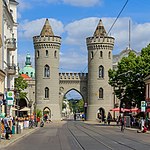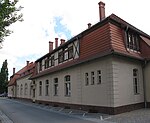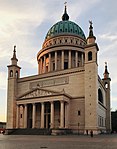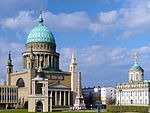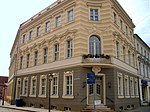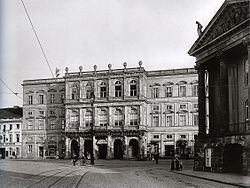Dutch Quarter
Architecture of the NetherlandsBrandenburg building and structure stubsBrick buildings and structuresBuildings and structures in PotsdamTourist attractions in Potsdam

The Dutch Quarter (Holländisches Viertel) is a neighborhood in Potsdam, consisting of 134 red Dutch brick buildings, almost all of which have been renovated. It was built from 1733 to 1740 and designed by Jan Bouman following the order of Frederick William I of Prussia.
Excerpt from the Wikipedia article Dutch Quarter (License: CC BY-SA 3.0, Authors, Images).Dutch Quarter
Mittelstraße, Potsdam Historische Innenstadt
Geographical coordinates (GPS) Address Nearby Places Show on map
Geographical coordinates (GPS)
| Latitude | Longitude |
|---|---|
| N 52.402777777778 ° | E 13.061111111111 ° |
Address
Mittelstraße 14
14467 Potsdam, Historische Innenstadt
Brandenburg, Germany
Open on Google Maps

